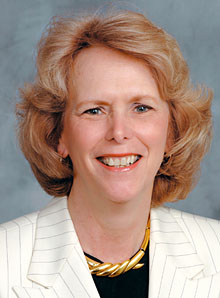 Mapping out a safe community, be it at school, on campus or in the workplace, starts with effective prevention and response plans to deal with incidents of gun violence, bullying or harassment.
Mapping out a safe community, be it at school, on campus or in the workplace, starts with effective prevention and response plans to deal with incidents of gun violence, bullying or harassment.
The consuming problem of school safety continues to be analyzed and probed, particularly since the December 2012 school shootings in Newtown, Conn.
Tom Kuroski, local president of the Newtown Teachers Association, said people everywhere felt anxiety after the Sandy Hook shootings that stole the lives of 26 children and educators and the gunman's mother.
"I don't care where in the country you were, you started to question the strength of your entryway in your building, or you started questioning how secure your door was, and ‘what would happen if that happened in our school?'" he said. "That anxiety makes it difficult for you to do your job."
Kuroski urged union leaders at this summer's American Federation of Teachers TEACH Conference to start or reactivate school safety committees, stressing the necessity of educator and union involvement.
Kathleen Donahue, NYSUT vice president and AFT vice president, serves on several committees focused on safe communities, including the State Education Department's Safe Schools Task Force. The task force is charged with reframing the Violent and Disruptive Incident Reporting System in concert with the Dignity for All Students Act, among other priorities.
"Our discussions look at things to make the schoolhouse itself a safer place," Donahue said. "There's not one thing to be fixed. Staff development is needed, more mental health services in schools and on campuses are needed, and so is more anti-bullying training."
New York's SAFE Act legislation includes criteria for schools to coordinate planning between school administrators and an array of first responders to identify and close gaps in a school's safety plans.
However, while legislation requires all State University of New York campuses to have a campus emergency response plan, the City University of New York and community colleges have no such requirement. NYSUT passed a resolution at its annual Representative Assembly in April to work with the Professional Staff Congress of CUNY and community college unions to press for required response plans.
NYSUT also is lobbying state lawmakers to provide funding for school districts, as well as SUNY, CUNY and the community colleges, to increase mental health services for students.
"Mental health personnel and services have been reduced over the past three years in response to the fiscal crisis," said NYSUT President Dick Iannuzzi. "Meanwhile, the mental health needs of students during this time have increased."
NYSUT's Board of Directors is working on the issue of gun safety and education from the point of view of three resolutions presented by union members at the RA. Another resolution seeks legislation that would include bus drivers, custodians, cafeteria workers and teacher's aides in the law that makes it a felony to attack teachers.
NYSUT has also made it a priority to advocate for passage of the School Violence Prevention Act, which would amend the Workplace Violence Prevention Act to include K-12 public schools.
SAFETY RESOURCES
Check NYSUT's Workplace Health & Safety page on www.nysut.org for general information and calls for action.
The United Federation of Teachers offers a school safety plan checklist and a safety committee checklist at www.uft.org/our-rights/school-safety-planning.
K-12 educators can visit www.p12.nysed.gov/sss/ssae/schoolsafety/save/.